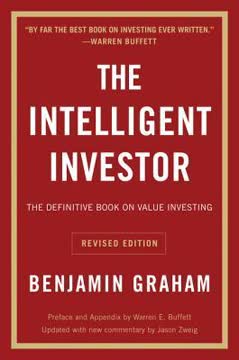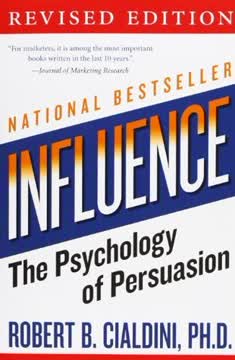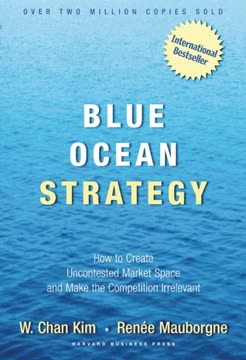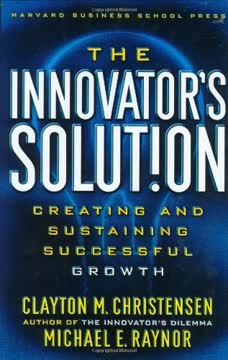つの重要なポイント
1. 破壊的技術はしばしば小さく見過ごされがちな市場から始まる
破壊的技術は通常、新しい市場の出現を可能にする。
小さな始まり、大きな影響。 破壊的技術はしばしば、既存の企業が見過ごすか、利益が出ないと考える小さな低価格市場から出現する。これらの技術は当初、主流市場では性能が劣るが、新しい用途で優れた成果を上げる。例としては以下が挙げられる:
- パーソナルコンピュータ:当初はおもちゃと見なされていたが、ミニコンピュータやメインフレームを破壊した
- 油圧ショベル:小規模な建設プロジェクトから始まり、最終的にはケーブル駆動機械を凌駕した
- ディスクドライブ:小型ドライブは新興市場(例:ポータブル機器)で始まり、既存市場に侵入した
これらの技術が改善されると、最終的には主流市場のニーズを満たし、しばしば低コストや利便性の向上をもたらし、業界の大変革を引き起こす。
2. 既存企業は資源配分のために破壊的イノベーションに苦しむ
マネージャーはゲームを本来のやり方でプレイした。既存企業の成功の鍵となる意思決定と資源配分のプロセスが、破壊的技術を拒絶するプロセスでもある。
資源配分がイノベーションを形作る。 既存企業が破壊的技術に苦しむのは、技術的な無能さではなく、資源配分のプロセスに起因する。これらのプロセスは以下をサポートするように設計されている:
- 高マージン製品
- 大規模市場
- 既存顧客のニーズ
破壊的イノベーションはしばしば:
- 低マージンを提供
- 小規模で未定義の市場をターゲット
- 現在の顧客のニーズを満たさない
その結果、破壊的プロジェクトは、上級管理職が支持していても、既存企業内での資源競争において一貫して敗北する。
3. イノベーターのジレンマ:良い管理が失敗を招く
確実な実行、市場への迅速な進出、総合的な品質管理、プロセスの再設計は同様に効果がない。
成功が失敗を生む。 イノベーターのジレンマは、既存市場での成功をもたらす管理慣行が、破壊的技術に直面したときに失敗を引き起こすことから生じる。これらの慣行には以下が含まれる:
- 顧客の声に耳を傾ける
- 高性能で高マージンの製品に投資する
- 大規模で成長する市場に焦点を当てる
これらのアプローチは持続的なイノベーションには効果的だが、破壊的な機会を見逃す原因となる。マネージャーはジレンマに直面する:現在の成功を確保するための慣行が、将来の失敗の種を蒔く可能性がある。
4. 市場需要と技術改善の軌跡が破壊を予測する
しかし、これは、成功した企業の最高経営者がイノベーション管理について学んだ多くのことが、破壊的技術には適用されないことを意味する。
軌跡が機会を明らかにする。 市場需要と技術改善の軌跡を理解することは、破壊的な可能性を予測するために重要である。重要な概念:
- 性能の過剰供給:技術改善が市場の需要を上回るとき
- 軌跡の交差点:破壊的技術が主流のニーズを満たすポイント
これらの軌跡を分析することで、マネージャーは以下を行うことができる:
- 破壊的な脅威を特定する
- イノベーションの機会を認識する
- 新技術の市場参入のタイミングを計る
戦略をこれらの軌跡に合わせる企業は、破壊的イノベーションに対して防御するか、またはそれを活用するためのより良い位置に立つことができる。
5. 破壊的イノベーションのための独立した組織の創設が重要
新しい組織が必要な資源を確保し、新しい挑戦に適したプロセスと価値を創造する自由を得るためには、CEOだけがそれを保証できる。
自律性が破壊を可能にする。 破壊的イノベーションを成功裏に追求するためには、既存企業は独立した組織を創設するべきである。このアプローチは:
- 異なるコスト構造と利益期待を可能にする
- 小規模で新興市場に焦点を当てる
- 新しいプロセスと価値の開発を許可する
重要な考慮事項:
- 独立した組織は、小さな勝利に興奮するほど小さくなければならない
- 資源配分において独立性が必要
- CEOレベルのサポートと注目が重要
成功したスピンアウトの例には、IBMのPC部門やジョンソン・エンド・ジョンソンの医療機器アプローチが含まれる。
6. 新しい市場の発見には市場調査ではなく実験が必要
破壊的技術に関するすべての不確実性の中で、マネージャーが常に頼りにできる一つのアンカーがある:専門家の予測は常に間違っている。
行動が分析に勝る。 破壊的技術に対して従来の市場調査は効果がない。なぜなら、市場がまだ存在しないからである。代わりに、企業は以下を採用すべきである:
- 発見駆動型の計画アプローチ
- 間違うことを計画し、迅速に学ぶ
- 低コストのプローブと実験を使用して市場をテストする
成功する戦略:
- 顧客が何をするかを見るだけでなく、何を言うかを見る
- 製品を作り、顧客がそれをどのように使用するかを見る
- 市場のフィードバックに基づいて反復し、方向転換する準備をする
ホンダの米国オートバイ市場での成功やインテルのマイクロプロセッサへの旅は、この実験的アプローチの市場発見の例である。
7. 性能の過剰供給が競争の基盤の変化を引き起こす
容量の需要が満たされた後、性能が市場の要求を満たしていない他の属性がより高く評価され、製品の差別化の次元を構成するようになった。
過剰供給が市場を再形成する。 製品の性能が市場の需要を超えると、競争の基盤が変化する。このプロセスは通常、以下のパターンに従う:
- 機能性
- 信頼性
- 利便性
- 価格
ある属性が「十分に良い」状態になると、顧客は他の特徴を評価し始める。このシフトは、従来の指標では劣るが、新興の指標では優れている破壊的技術に機会をもたらす。
例:
- ディスクドライブ:容量からサイズと消費電力へのシフト
- 会計ソフトウェア:機能性から使いやすさへのシフト(インテュイットの成功)
- インスリン:純度から投与の利便性へのシフト
8. 組織の能力は資源だけでなくプロセスと価値に存在する
組織には、その中で働く人々の能力とは独立して存在する能力がある。組織の能力は、そのプロセスと価値に存在する。
プロセスと価値が能力を定義する。 企業のイノベーション能力は、その資源(人、技術、資本)だけでなく、以下にも依存する:
プロセス:
- 仕事の進め方
- コミュニケーションパターン
- 意思決定手続き
価値:
- 優先順位を設定する基準
- 「良い」プロジェクトを定義するもの
これらの要素はしばしば非常に根深くなり、関与する個人に関係なく、組織が何をできるか、何をできないかを定義する。これが説明するのは:
- 既存企業が持続的なイノベーションで優れている理由
- 既存のプロセスと価値に適合しない破壊的技術に苦しむ理由
9. イノベーション管理には課題と組織の能力の一致が必要
加速する変化に対処する能力が非常に重要になっている時代において、有能な人々を有能な組織に配置することは、主要な管理責任である。
課題と組織の一致。 成功するイノベーション管理には、イノベーションの種類と適切な組織構造の一致が必要である。重要な考慮事項:
- 既存のプロセスがイノベーションの課題に適しているか評価する
- 現在の価値がイニシアチブをサポートしているか判断する
- 適切な組織構造を選択する:
- 現在の能力を活用するための機能チーム
- 新しいプロセスを作成するためのヘビーチーム
- 新しい価値を開発するための自律的な組織
イノベーションの課題を適切な組織能力に一致させることで、マネージャーは持続的および破壊的イノベーションの成功の可能性を高めることができる。
最終更新日:
FAQ
What's The Innovator's Dilemma about?
- Focus on Company Failures: The book examines why successful companies often fail when faced with disruptive technologies, despite having strong management practices.
- Disruptive vs. Sustaining Technologies: It differentiates between sustaining technologies that enhance existing products and disruptive technologies that initially underperform but eventually dominate the market.
- Case Studies: Christensen uses examples from industries like disk drives and excavators to show how established firms often miss disruptive innovations.
Why should I read The Innovator's Dilemma?
- Understanding Innovation Dynamics: The book offers insights into how companies can navigate technological changes effectively.
- Practical Framework: It provides a framework for recognizing when traditional management practices may lead to failure, aiding strategic decision-making.
- Relevance Across Industries: The principles are applicable to various industries, making it valuable for anyone in business or technology.
What are the key takeaways of The Innovator's Dilemma?
- Importance of Disruptive Innovation: Successful companies often fail to recognize disruptive technologies, leading to their downfall.
- Resource Dependence Theory: Companies are often influenced by existing customers, affecting their resource allocation and innovation strategies.
- Need for Separate Organizations: To pursue disruptive technologies, companies should create independent units free from existing customer demands.
What is the "innovator's dilemma" as described in The Innovator's Dilemma?
- Conflict of Interests: The dilemma involves choosing between investing in sustaining innovations or pursuing disruptive technologies that seem less profitable initially.
- Resource Allocation Issues: Companies often prioritize projects with higher returns, neglecting disruptive innovations crucial for future success.
- Long-Term Consequences: This focus on short-term gains can jeopardize a company's long-term viability.
How does The Innovator's Dilemma explain the failure of companies like Sears and IBM?
- Ignoring Market Changes: Both companies failed to adapt to disruptive changes, focusing on sustaining innovations demanded by existing customers.
- Customer-Centric Decisions: Their logical, customer-focused decisions led to their decline as they overlooked emerging market needs.
- Historical Context: Christensen provides historical examples to show how these companies became obsolete due to ignoring disruptive technologies.
What is the definition of disruptive technology in The Innovator's Dilemma?
- Underperformance Initially: Disruptive technologies initially underperform compared to existing products in mainstream markets.
- Different Value Proposition: They offer features appealing to niche markets, often being cheaper, simpler, or more convenient.
- Market Evolution: Over time, as the technology improves, it can compete in mainstream markets, displacing established products.
How can companies manage disruptive technological change according to The Innovator's Dilemma?
- Create Independent Units: Establish separate organizations focused on disruptive technologies, free from existing customer constraints.
- Align with Emerging Markets: Managers should align efforts with customers who need the disruptive technology, ensuring effective resource allocation.
- Iterative Learning Process: Embrace trial-and-error to discover market needs and refine products, rather than relying solely on traditional market research.
What are the principles of disruptive innovation outlined in The Innovator's Dilemma?
- Resource Dependence: Companies rely on customers and investors for resources, limiting their ability to pursue disruptive technologies.
- Small Markets: Established firms often overlook small, emerging markets that could foster disruptive innovations.
- Market Uncertainty: The uses of disruptive technologies are often unknown initially, making it hard for firms to justify investment.
How do companies typically respond to disruptive technologies?
- Initial Resistance: Established companies often resist disruptive technologies as they don't meet the needs of their most profitable customers.
- Focus on Sustaining Innovations: They tend to focus on sustaining innovations with higher margins, neglecting disruptive technologies.
- Eventual Adaptation: Some companies adapt by creating separate divisions for disruptive technologies, but often too late to regain leadership.
What role does market research play in identifying disruptive technologies?
- Limitations of Traditional Research: Traditional market research often fails to identify opportunities for disruptive technologies, relying on existing customer needs.
- Need for Active Exploration: Companies should engage in exploration and experimentation to discover potential markets for disruptive technologies.
- Learning from Experience: Valuable insights often come from real-world experiences and customer interactions, not just theoretical analyses.
How does the concept of performance oversupply relate to disruptive technologies?
- Definition of Performance Oversupply: Occurs when existing technologies exceed market needs, creating opportunities for disruptive technologies.
- Shifting Basis of Competition: Competition shifts from functionality to attributes like reliability, convenience, and price, favoring disruptive technologies.
- Historical Examples: The book provides examples, such as the disk drive industry, where performance oversupply led to the rise of simpler, more convenient products.
What strategies can companies employ to avoid the pitfalls of the innovator's dilemma?
- Separate Disruptive Initiatives: Create separate initiatives or divisions to focus on disruptive technologies, independent from the mainstream business.
- Encourage a Culture of Experimentation: Foster a culture that embraces experimentation and tolerates failure to adapt to disruptive changes effectively.
- Align Processes and Values: Ensure organizational processes and values align with the needs of disruptive innovations to enhance success.
レビュー
『イノベーターのジレンマ』は、成功した企業が破壊的技術に直面したときにしばしば失敗する理由を探る、非常に影響力のあるビジネス書である。読者は、クリステンセンの洞察に満ちた分析と、特にディスクドライブ業界からの説得力のある例を称賛している。本書の核心となる概念は今日でも有用であるが、文体が乾燥していて繰り返しが多いと感じる人もいる。多くの人々は、マネージャーや起業家にとって必読の書と考え、イノベーションの課題を理解し対処するための貴重なフレームワークを提供していると評価している。しかし、一部の人々は、例が古いことや、より最近のケーススタディが不足していることを批判している。
Similar Books






















